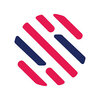4 VenPep Solutions Jobs

Graphic Designer
VenPep Solutions
posted 9d ago
Job Role Insights
Flexible timing
Key skills for the job
Job Description
Overview
The role of a Graphic Designer is essential in creating visual content that effectively communicates ideas, messages, and branding for a variety of contexts. A Graphic Designer works closely with marketing teams, clients, and other stakeholders to transform concepts into engaging graphics, images, and layouts. In an increasingly digital world, the Designers expertise in using graphic design software and understanding the visual language is crucial to delivering high-quality materials that resonate with target audiences. This role requires a blend of art, technology, and communication skills, ensuring that visual content not only meets aesthetic standards but also aligns with the strategic objectives of the organization. By leveraging creativity and technical skills, the Graphic Designer plays a pivotal role in enhancing a brands identity and driving customer engagement across various platforms.
Key Responsibilities - Develop design concepts that align with client or project briefs.
- Create visually appealing graphics for digital and print media.
- Collaborate with marketing teams to conceptualize promotional materials.
- Edit and enhance photos to meet project specifications.
- Research design trends and incorporate them into projects.
- Prepare layouts and art for online platforms, including websites and social media.
- Present design ideas and concepts to clients or stakeholders.
- Ensure all graphics adhere to brand guidelines and standards.
- Stay updated on technology and software changes in graphic design.
- Manage multiple design projects and meet tight deadlines.
- Optimize graphics for different formats and platforms.
- Gather feedback from clients and make necessary revisions.
- Maintain organized files for projects in both digital and paper formats.
- Assist in developing brand identities from concept to execution.
- Participate in team meetings and brainstorming sessions.
- Bachelors degree in Graphic Design, Visual Arts, or related field.
- Proven experience as a Graphic Designer or in other visual arts roles.
- Strong portfolio showcasing a variety of design projects.
- Proficiency in graphic design software, including Adobe Photoshop, Illustrator, and InDesign.
- Solid understanding of typography, color theory, and layout principles.
- Experience with Adobe After Effects or similar software is a plus.
- Knowledge of web design principles and UX/UI design.
- Ability to work collaboratively in a team-oriented environment.
- Strong organizational skills and attention to detail.
- Effective time management skills to prioritize tasks.
- Good communication skills to articulate design concepts and ideas.
- Ability to accept constructive criticism and adapt designs accordingly.
- Familiarity with print production processes and specifications.
- Up-to-date knowledge of current trends in graphic design.
- Previous experience in a marketing or advertising agency is advantageous.
- Willingness to learn and adapt to new tools and technologies.
Employment Type: Full Time, Permanent
Read full job description What people at VenPep Solutions are saying
Graphic Designer salary at VenPep Solutions
reported by
4
employees
with 4-6
years exp.

₹3
L/yr - ₹3.5
L/yr
21%
less
than the average Graphic Designer Salary in India
View more details
What VenPep Solutions employees are saying about work life
based on 3 employees
Flexible timing
Monday to Friday
No travel
Similar Jobs for you
Share an Interview






























